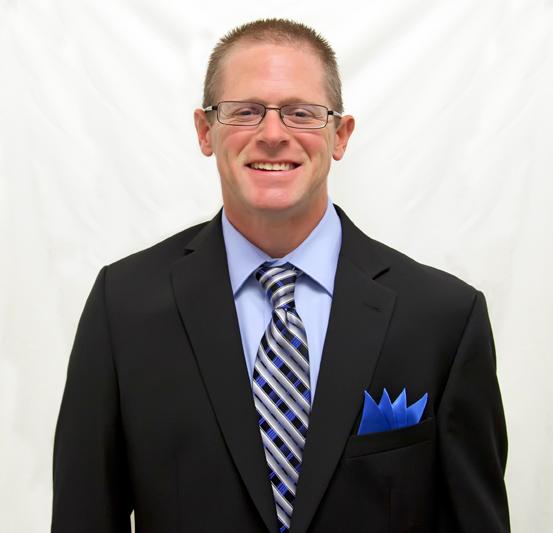
17 minute read
Getting to Know...
Getting to Know...Steve Gibson, NACAT Board Chair
Land Speed Racing IV (The final chapter)
The engine sat in that same spot, untouched, for the next 8 years.
I had no idea at the time what events were about to unfold over the next 8 years. It was the beginning of 2002 when I started the engine rebuild. I had just graduated from college the summer before. I had been working two jobs, full time during the day at the local speed shop in town, and in the evenings after work I was cleaning the shop that I had worked in since high school. I had been looking to make the “career” move to a “real job” and the opportunity finally came that spring. It wasn’t an automotive industry job, I was working for a youth services nonprofit organization managing volunteers in a territory or “district”. It was an uphill battle and I struggled. I could manage the people very well. Problematically, I discovered that my predecessor had falsified much of the membership in the district, and we only had 25% of the members we had on paper. Additionally, growth was very hard to create due to my district being comprised from a lower socio-economic area. I did what I could to support the volunteers in my area, who had always been the “red haired stepchildren” of the organization. They really appreciated having someone who was there to listen to their needs and could provide guidance and support. I am still friends with many of these people today. But growing the membership just to get to 50% of what we “had” on paper was next to impossible.
In the fall of 2002, I was also faced with a relationship with my childhood sweetheart ending. We were one of those “meant to be” couples who had known each other since we were kids. We were engaged to be married and dealing with the stress of having everything unravel pushed me into depression. It was hard for me to cope with things, and my performance at work began to suffer. On top of everything else, the organization I was working for was in financial trouble. I was let go at the end of spring 2003. I had to move back in with my parents, but they had just decided to retire. They were going to be moving out of state the following year.
Fortunately, I was able to get back on my feet and follow my heart. I landed a job in the fall of 2003 at Factory Motor Parts, an AC Delco distributor. I was very happy to be back in the automotive industry and I knew that was where I belonged. Factory had an accessories line, and I found an opportunity to grow in this area since there was only one person running the whole program. We primarily sold truck accessories like hitches, bedliners, LED taillights, and a bunch of “trinkets and trash”. We also sold K&N air filters. I came home from work one evening in the spring of 2004 to a message on the answering machine from K&N. I had answered a job ad K&N had placed back when I was job hunting in the summer of 2003, and they were finally responding. I had one phone interview and 2 in-person interviews after which they sent me a job offer. I started at K&N in June 2004 in a Customer Service position, but advanced quickly. I was moved to a Tech Support position that fall, and then the department lead in January 2005. I also began training our department staff and new hires, and was promoted to the head of training for the department in January 2006. But like so many people, I was living paycheck to paycheck making just enough money to get by. I was still going back to the shop I started at every evening to clean to make some extra money. The Camaro had been at the shop this whole time, as I didn’t have any other place to store it. I would occasionally push it up into the wash bay and hose it off to try and keep it clean and appearing decent. Finding the extra money to resume the engine rebuild was next to impossible.
In August 2006 I was in a major car accident. I hit a tree at a high rate of speed, suffered a depressed skull fracture (think of cracking a hard-boiled egg on the larger end) and was in a coma for 2 days. I was rushed into emergency surgery to relieve the intercranial bleeding, repair the skull fracture, and remove pieces of skull that had penetrated my brain. While in recovery from the brain surgery, I lost circulation in my right arm. The doctors ran a roto-rooter type device through my veins and restored circulation, but 12 hours later I lost circulation again. The decision was then made to amputate my right arm. I emerged from my coma in the recovery room after my amputation, faced with a new set of challenges ahead. By nothing short of a miracle, I recovered quickly. I was back to work part time at Halloween and full time by the end of November. I did have some level of brain damage from the brain injury: some of it measurable, some not. Fortunately, I had no memory loss other than 1-1/2 hours before the car accident. But in order to be able to race the Camaro again, I would have to find ways of driving and controlling a race car with just one hand.
In 2009, I was moved to a new position at K&N. I was put in charge of developing an outreach program targeting automotive programs in schools. The goal was to train students on how K&N products work so that they take that knowledge with them into their automotive career as technicians. This is what led me to discover NACAT. If I could also train the instructors with the same information, the number of students we could reach as a company would grow exponentially. I really enjoyed this program since I connected with it personally in so many ways. The conversations I had didn’t just revolve around product knowledge. Many students wanted to know how I ended up in my career. Many were also unaware of all the different career paths their education could take them to. All of these discussions were made possible by our common interest in working on cars and making them more powerful. I stayed in this position for the rest of my tenure at K&N.
I hadn’t been participating with the car club much the past few years due to everything happening in my life. In 2009 I learned that Charlie had an aggressive form of cancer and treatment wasn’t having any success. I gave him a call to go by and see him, since it had been several years. Chemotherapy, radiation, and the cancer was making him wither away. He was a fraction of his former weight; it was a tough reality to deal with. During my visit the conversation came up about the Camaro. I told him that I did still want to put it back together to be able to race again. Charlie told me that it would be best if I took all the engine parts home since he knew he didn’t have much time left and he wasn’t in a condition to help me anymore. This was sad, but I realized it was for the best. I didn’t want the engine to disappear when Charlie passed; his next of kin wasn’t aware of any of the arrangements he and I had. So Charlie opened up the garage and backed his truck out, and I backed my truck into the driveway. The engine block was still sitting in the corner where I had left it in 2002. I found a rag and cleared the dust off the bag covering the block, then wheeled it out to the center of the garage and unwrapped it. I had done a good job sealing everything, the engine block was absolutely spotless. No dust, not a single hint of rust. It was unbelievable. The engine stand was exactly the same height as my tailgate, so I wheeled the stand over to the truck and Charlie had just enough strength to help me slide it off the engine stand into the bed. The rods and pistons were in the cabinet above where the engine had been, I loaded those as well, along with the cylinder heads and camshaft which Charlie had inside his gun safe. After everything was loaded, I gave Charlie a hug and made him a promise that the Camaro would run again, no matter what it took. I realized I wasn’t the owner of the Camaro, just its caretaker, and just like I was given a second chance at life, I owed the Camaro a second chance at life as a race car as well. As I left that evening, it was the last time I ever saw Charlie. I was in Las Vegas for the CARS/NACE Expo in October of 2010 when I got the call from Mike that Charlie had passed. Now I just needed to figure out how to keep my promise.
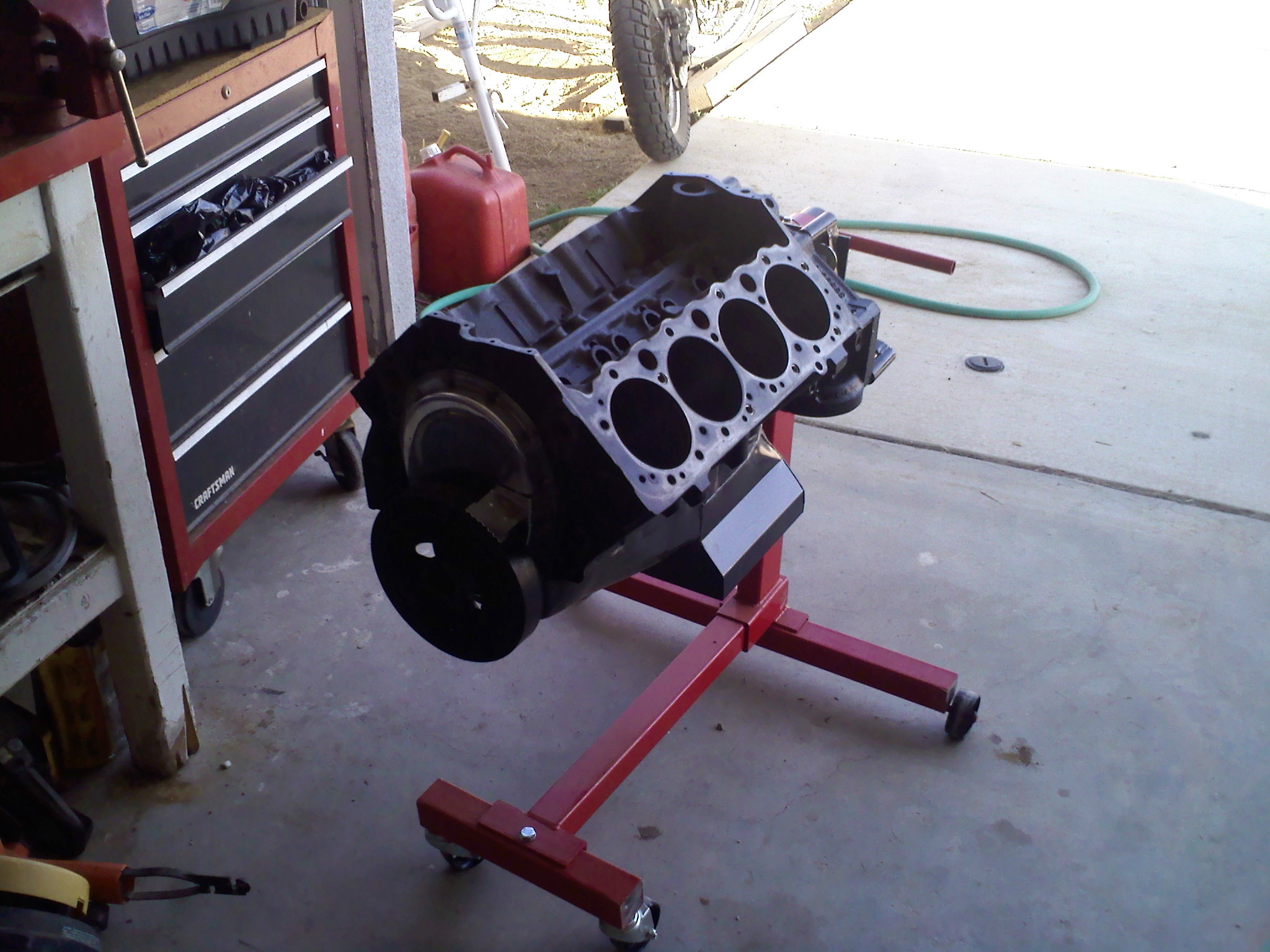
The Camaro's Small Block Chevy engine after it was retrieved from seven years of storage in Charlie's garage.
It took a full 3-1/2 years to put the Camaro back together to a race-ready condition. Many items in the rulebook had changed regarding safety, and it took a lot of work and creativity to bring the car up to code. I decided to tackle the engine first and get the car to where it would actually crank and run. I upgraded some parts like the connecting rods and rod bolts and removed the crankshaft from the block to have it rebalanced for the new rods. I had been very fortunate to make a lot of industry connections while I was at K&N, and was able to get a lot of the items I needed at a substantial discount. Over the course of many weeknights and weekends I got the engine assembled. It began to look exactly like I remembered it, and I couldn’t wait to hear it again. I also had the transmission rebuilt, driveshaft rebalanced, replaced all the wheel bearings, installed new brakes, master cylinder, and rewired the car. In September 2011 the engine came to life again, the first time it had run in almost 10 years. But there was still a lot of work that needed to be done.
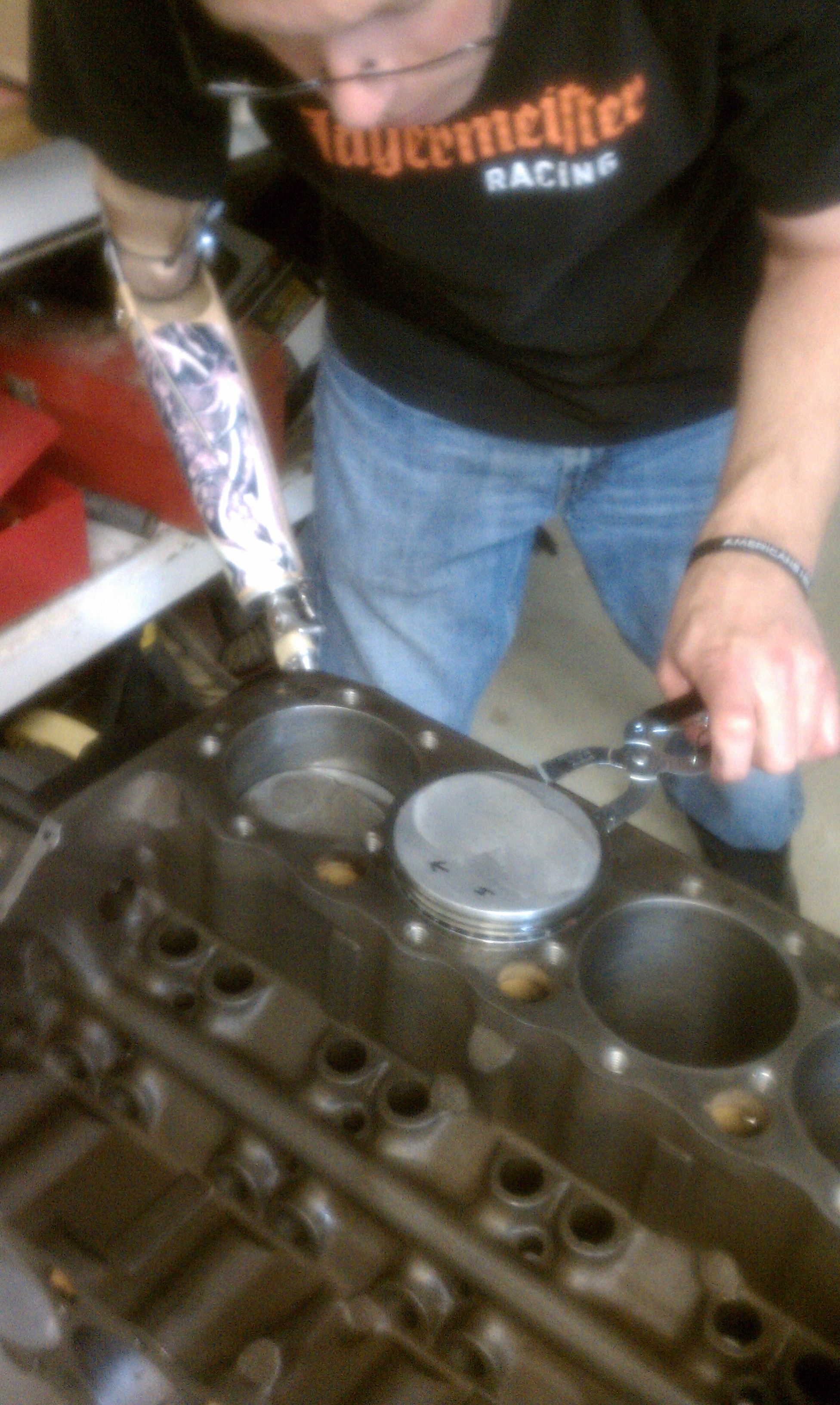
Assembling the engine after sourcing parts.
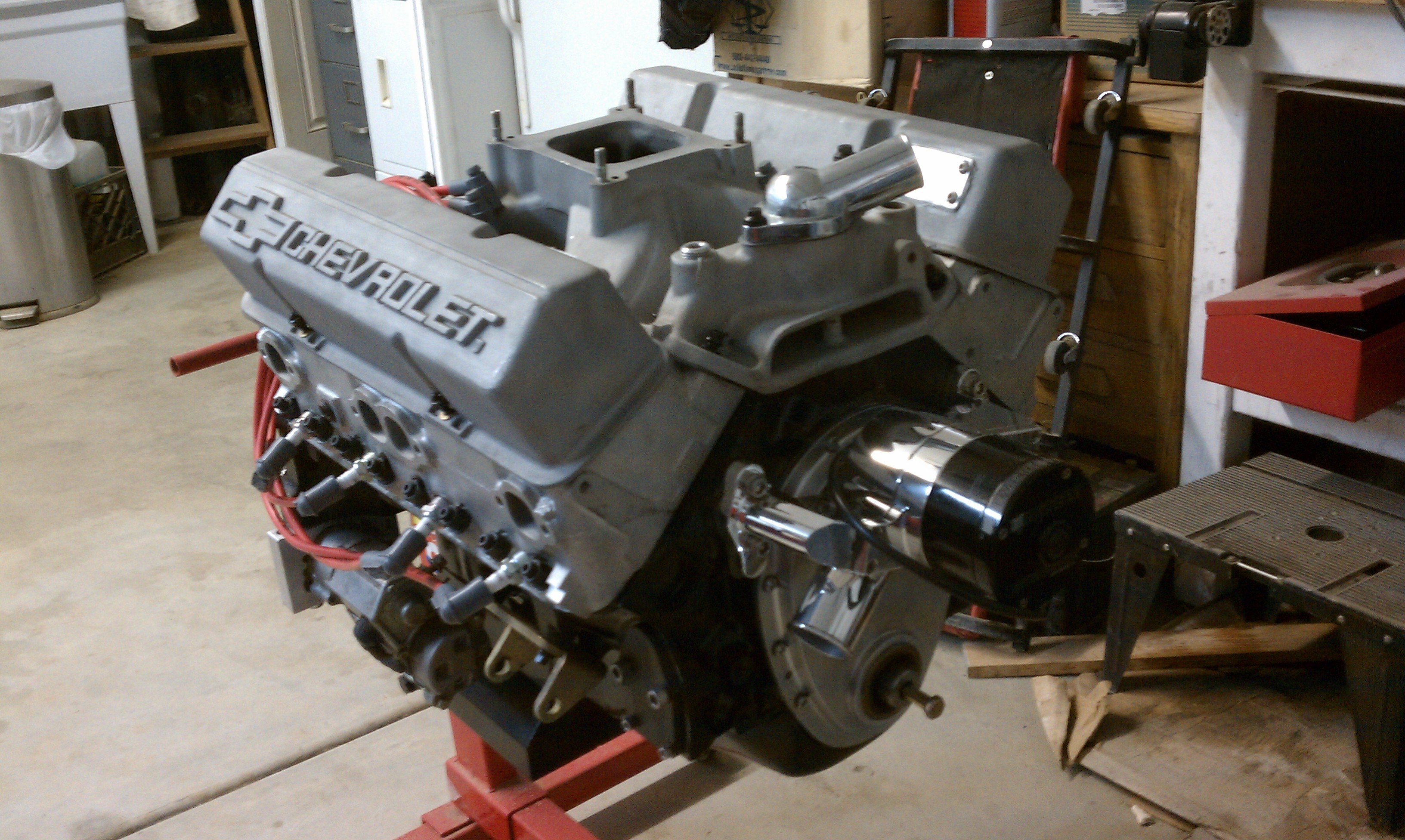
An Amazing Feeling: Seeing the engine fully assembled again!
In addition to the safety items that needed to be updated, I also had the challenge of figuring out exactly how I was going to drive the car with just one hand. I do wear a prosthetic arm, but when you are tightly strapped in a racing seat with a 5 point harness it doesn’t offer much help. I had three main challenges: how I was going to shift the transmission, how I was going to deploy the parachute, and finding ways of doing each of these actions without taking my hand off the steering wheel. I also wanted each solution to be low cost and reliable. I started researching shifters and realized there wasn’t anything commercially available or affordable that did what I needed. The Camaro had used a ratchet-style shifter mounted to the transmission tunnel in the past. I brainstormed a bit and came up with an idea – why not relocate the shifter to the floorboard and shift it with my left foot? I designed a custom toe loop that I could put my foot through to push and pull on the shifter, and a friend who is a fabricator made it for me out of steel. On the parachute, I needed a way of pulling on the control cable, so I decided to try a power door lock actuator that I could activate using a switch on my switch panel, which was mounted directly behind the steering wheel. I could extend my finger and hit the switch to deploy the parachute, without ever letting go of the wheel.
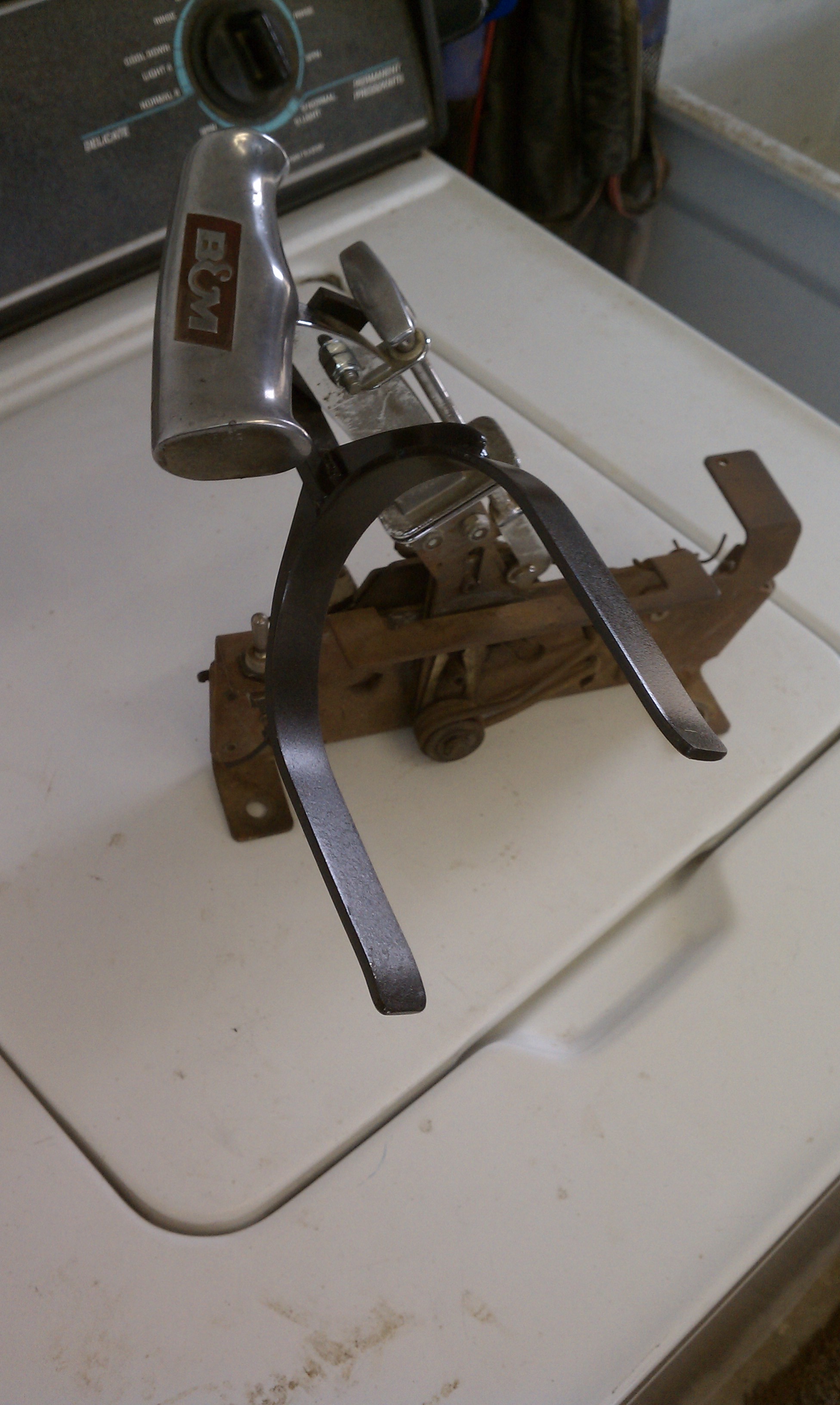
Foot-Shifter 1.0
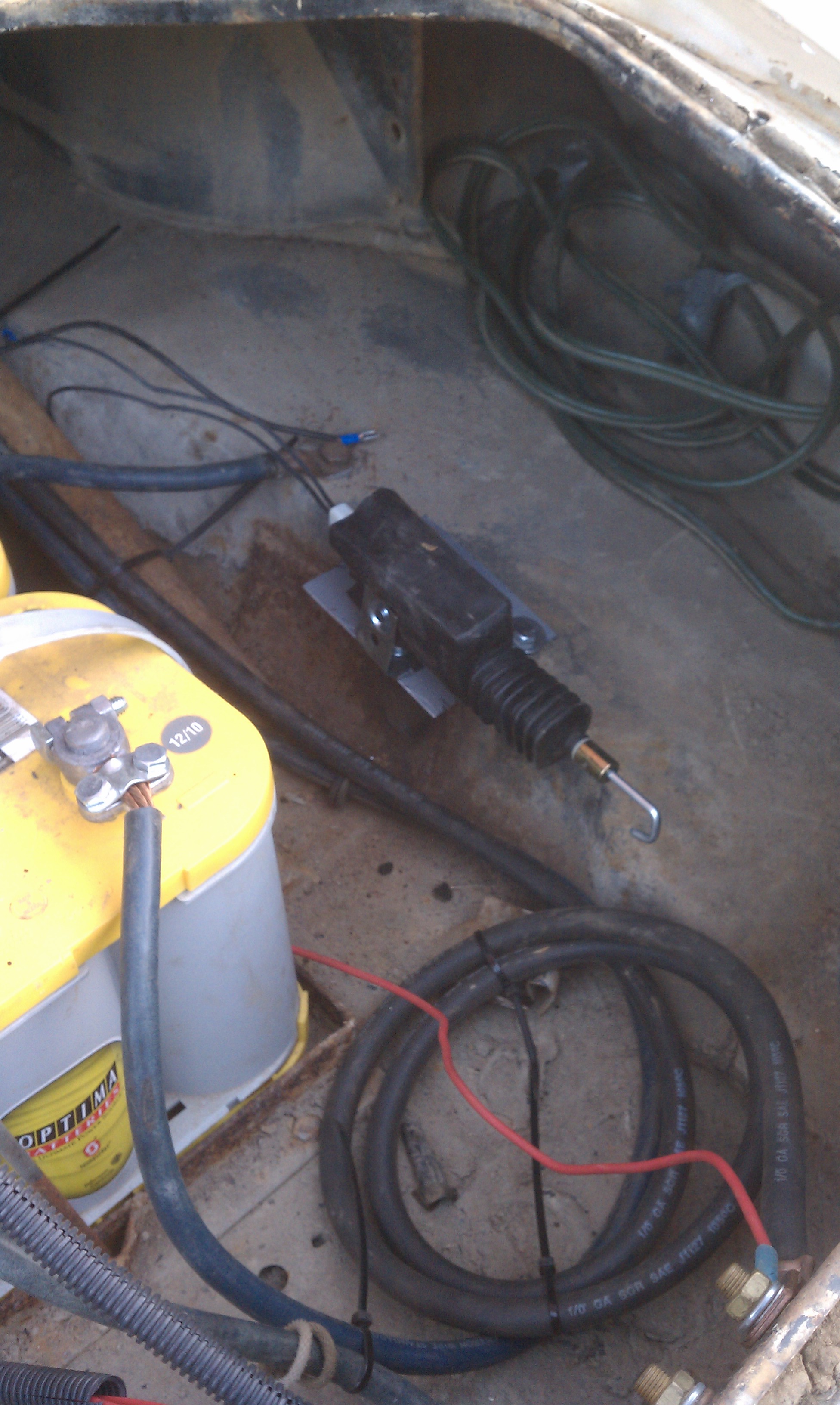
The door lock actuator Steve utilized to pull the parachute release cable.
In November 2013, the Camaro rolled off the trailer onto the dry lakebed at El Mirage for the first time in 12 years. It took a long time to get through tech inspection since the car hadn’t been entered in an event in so long. Mike was now running his own car again, so I recruited another member of the car club who was familiar with helping run a car to come and give me a hand. It was late in the afternoon by the time I was ready to make a run, but the car ran and drove under its own power that day for the first time since 2001. Unfortunately, the run didn’t last very long. When it was time to shift from first to second, the torque angle of my foot pushing on the custom loop I had designed actually bent the lever of the shifter, preventing me from reaching second gear. I had no choice but to turn out.
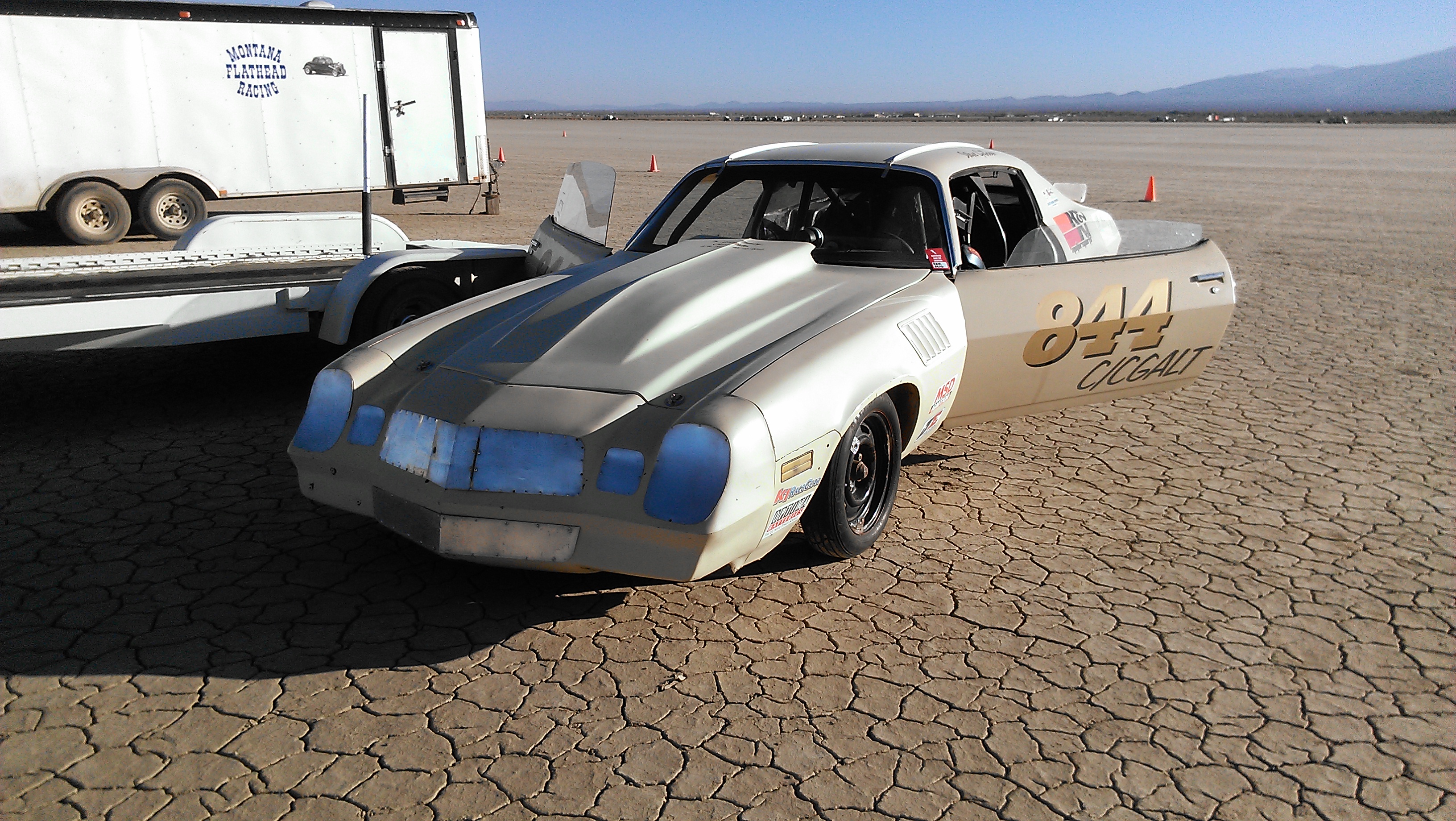
November 9, 2013: The Camaro finally reunites with El Mirage Dry Lake for the first time in 12 years.
When I got back to my pit area, Mike and all the other car club members who were present came over to congratulate me and to find out what had happened. One by one, they looked at the shifter, but no one really had any ideas or suggestions to change it or to make it more reliable and unbreakable. One of the club members, Gary, was a professor of engineering, and was very intrigued by the foot shifter idea. Gary suggested that perhaps I could turn this into a design competition for his engineering class. This was a fantastic idea and I couldn’t wait to see what his students could design! Gary and I designed the competition and outlined my requirements for the shifter, and his students had 2 months to come up with a design. I would evaluate the submissions and select the best one, purchase materials, and the student would then make their design. In addition, the winning students name would be on the car the next time it ran. After 2 months, I received 12 different shifter designs to evaluate. The winner I selected actually reused the original ratchet mechanism from the old shifter which kept cost down, but they designed a new lever, to replace the bent one, that had an integrated pedal, which moved the inertia forces from my foot and would keep the lever from bending. I purchased the materials, dropped them off at the engineering lab at Gary’s school, and foot shifter number 2 came to life. I got it bolted in to the Camaro very easily since all the attachment points remained the same. I really enjoyed having student involvement in my racing hobby, and the students really enjoyed the project.
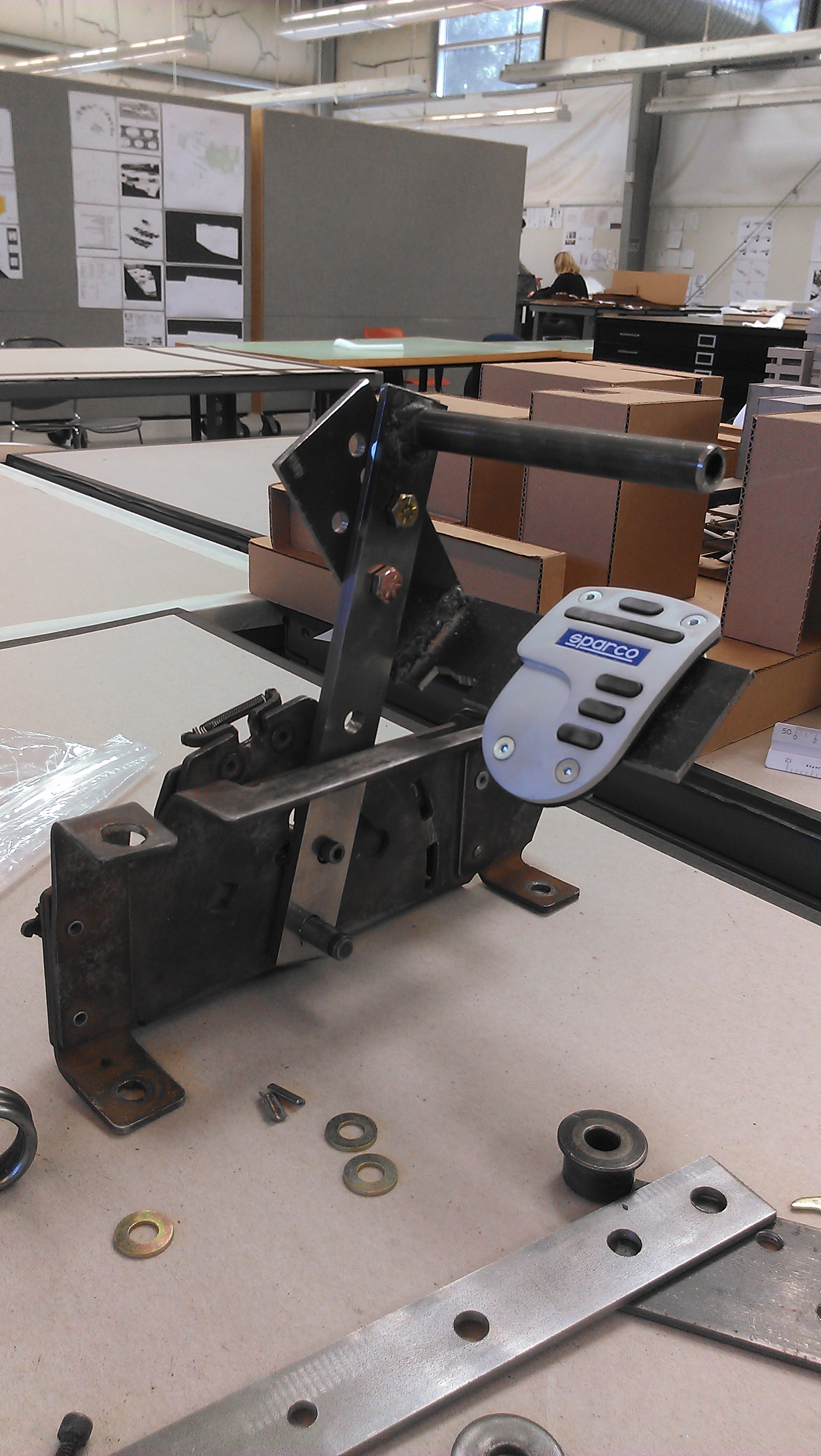
Engineering students participated in a design competition to create Foot Shifter version 2.0!
Due to more life circumstances, I wouldn’t have the chance to race the Camaro again for another 2 years. In May 2015 I was attending an end of year awards celebration at one of the local high schools I had built a relationship with at K&N. I was there to present a scholarship to one of their graduating seniors. I had the scholarship check and my printed speech notes in a folder, and when I opened up the folder and took these items out there was a picture of the Camaro directly behind them. An automotive instructor, Wendy, from the local community college happened to be sitting right next to me, saw the picture, and said “Is that El Mirage?” We struck up a conversation after my presentation, as it turned out she also went to El Mirage, mostly as a spectator, but she always took a group of her students with her to expose them to Land Speed Racing. The more we talked, she said it would be really cool if she could bring her students by to see my Camaro the next time I had it at El Mirage. I countered with another idea. I suggested “Would they be interested in helping me run it?” I was in need of regular help, I couldn’t race by myself, you have to have a support crew, and I was intrigued at having another opportunity to expose students to the sport of Land Speed Racing as participants, not just spectators. Wendy loved the idea, and we set up a plan. It would be another year before I was able to take the Camaro to El Mirage again, but when I did Wendy and her students would be there to help. I really enjoyed working with her students, teaching them about the car, the safety gear, and race procedures. It was extremely rewarding. Even if the group of students changed, I could teach the new ones quickly and get them up to speed, and the returning students would fill in the gaps. They were learning the sport and what it takes to run a race vehicle and having a blast doing it. More than that, they realized what a great responsibility they were being trusted with, that their actions directly affected my safety, and that I had confidence in their abilities. It was rewarding for me to see them learn and grow, and it was rewarding for them to have that opportunity given to them. Together with Wendy and her students’ help, I was able to make the Camaro’s first full pass down the racecourse 15 years after its last successful run and get reacclimated behind the controls of a race vehicle. We have tackled the 100, 110, 120, 130, 140, 150, 160, and 165 mph barriers and are still looking to go faster as I continue to tune on the engine. For most of these students, the only time they have seen a pushrod engine, a distributor, or a carburetor is in a picture. I enjoy explaining to them how this “old stuff” works and how it relates to what they see in modern vehicles.
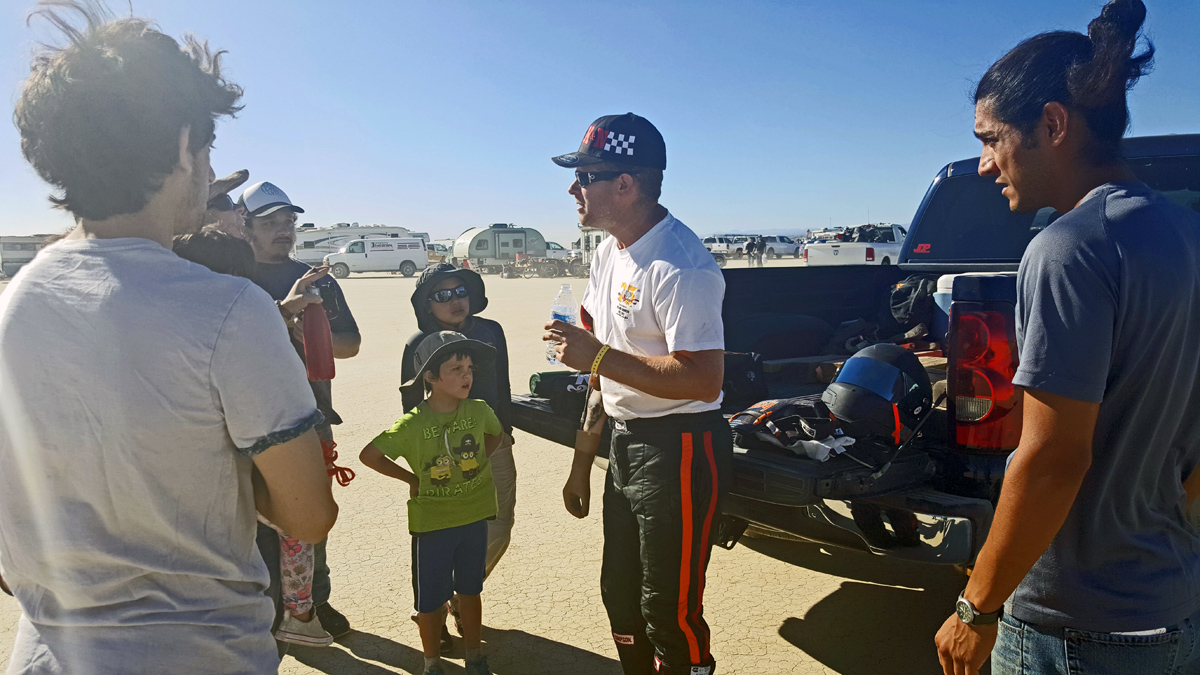
Working with students and being able to expose them to opportunities in racing is something Steve finds very fulfilling.
I never imagined that Land Speed Racing would turn into a teaching opportunity for me. Sure, there’s the automotive technology topics we discuss, but, beyond the nuts and bolts, the life lessons that are taught are priceless. I certainly had many life lessons taught to me in my first years of racing, and now it feels like it’s an obligation to help the younger generations through racing as well. Just like Charlie and Mike were an inspiration and mentors to me, I hope I can be the same for younger up and coming racers. I will never forget the road it took to get to where I am now. I still enter the Camaro under the name “Miller & Miller” just like Charlie used to. And when I get asked “who are Miller and Miller” boy what a long story it is.
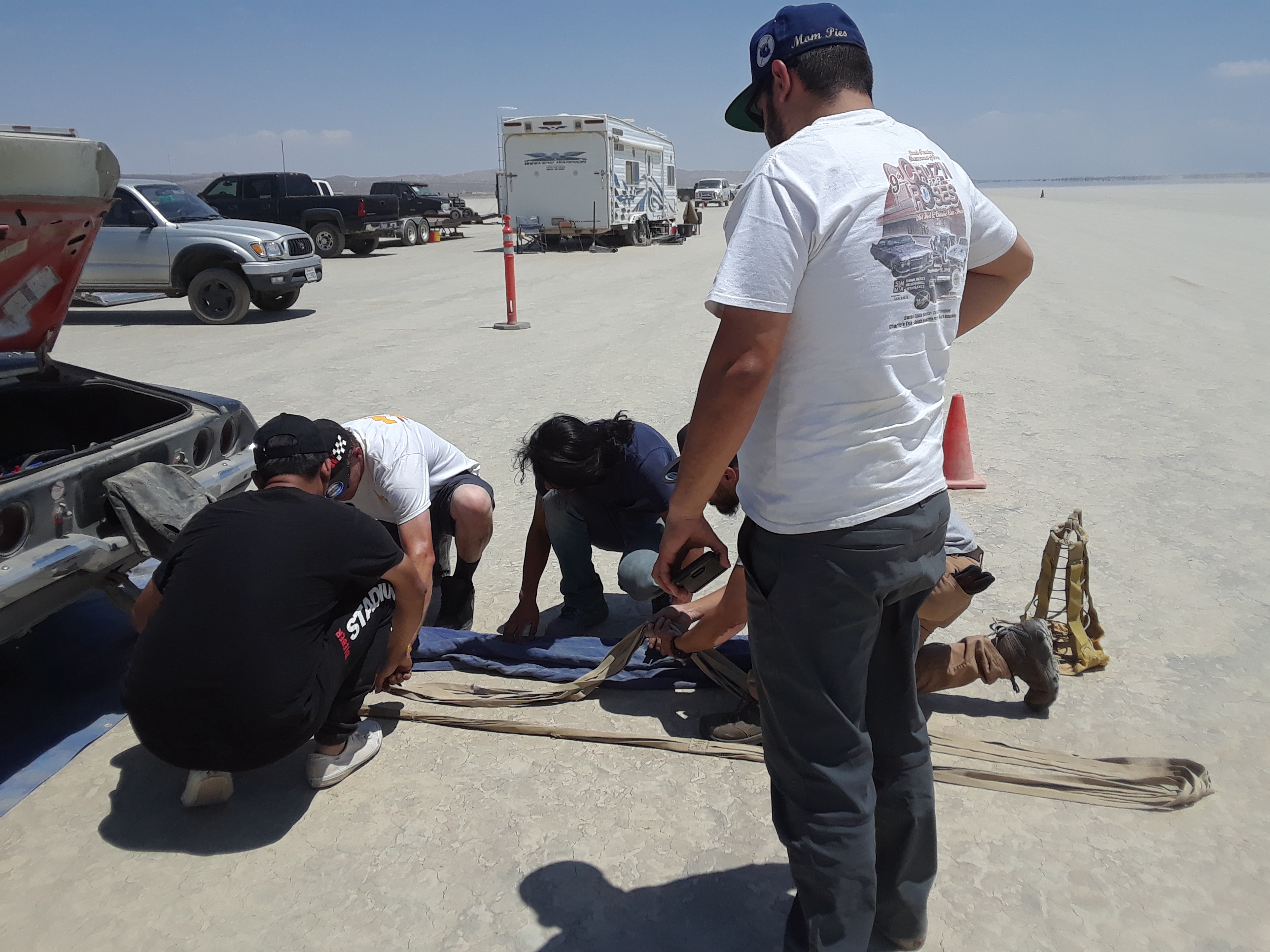
Packing a parachute is a great teaching tool on so many levels. Most drivers prefer to pack their own chute, as it is the primary method of slowing the cars down from high speeds where brakes are ineffective. If the chute fails, a driver who packed his or her own parachute has no one else to blame. But when one takes the time to teach chute packing to someone else, the student gets to master the technique while also learning about responsibility, trust, communication, safety, and even physics.
THANK YOU, Steve, for sharing your story with us and your passion with so many others!



